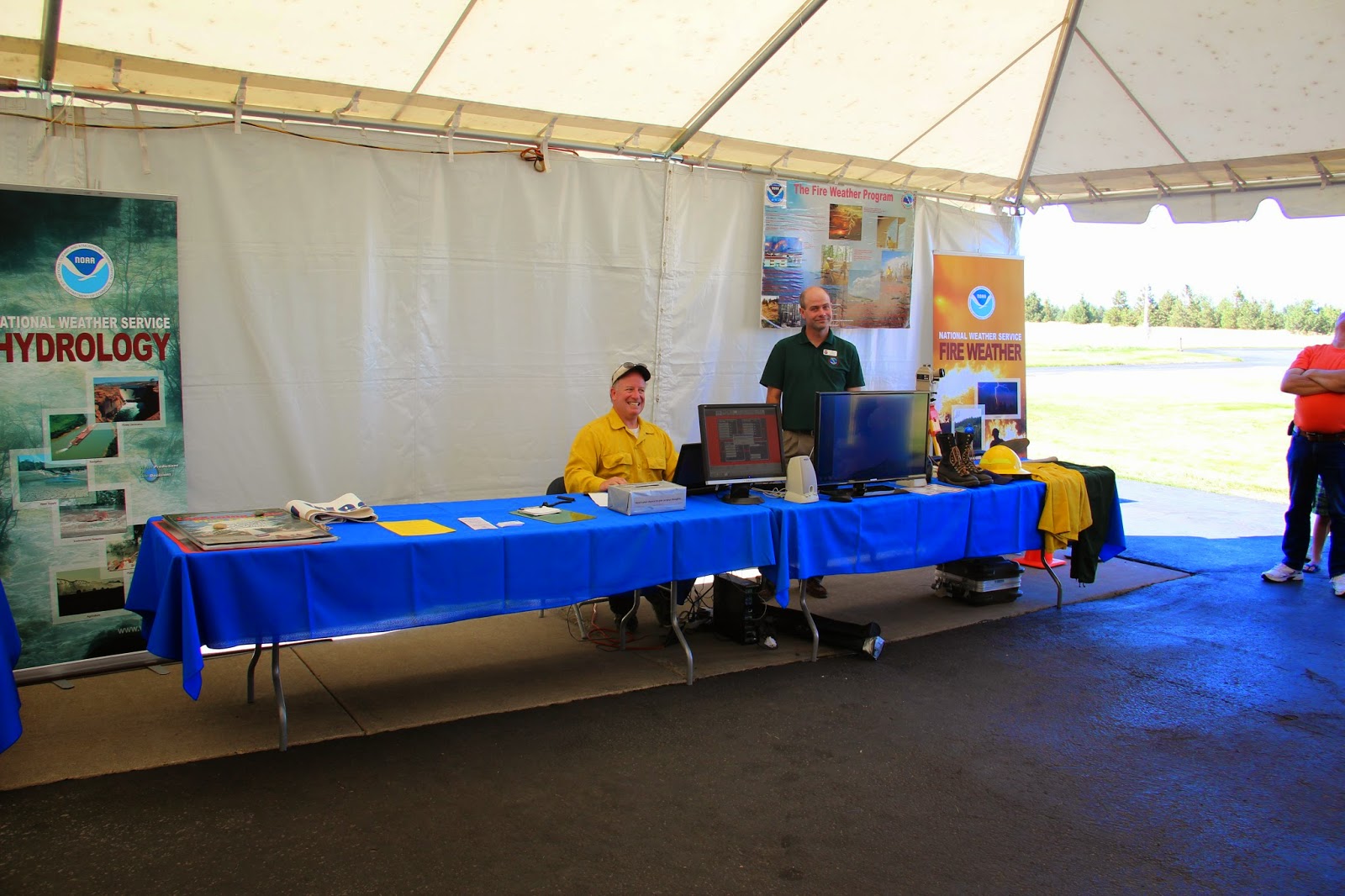The Open House was truly that, allowing the guests to roam freely thru most of facility. Staff were on hand in all areas to meet, greet, conduct demonstrations and answer questions. Informative displays explained many of the issues and subjects the NWS deals with on a daily basis. A tented area allowed for added space for more displays and a presentation mini-theater.
Upon entering the front door guests were greeted by Admin Assistant Rose Tibbitts who asked guests to sign in and then explained the overall set up and general flow of the event.
The conference room was turned into a display area with posters, pictures, a presentation on the 2014 wild summer weather and a weather quiz. Do you know the hottest temperature ever recorded in Washington?
The Operations Area was set up so that the normal forecast and observation functions could continue uninterrupted, while guests could interact with a forecaster at an AWIPS workstation. Forecaster Steve Bodnar manned the AWIPS workstation for most of the day explaining how we formulate and issue our forecasts and warnings.
Guests then walked into the Electronics Shop where Electronics Systems Analyst Dwight Williams explained the various system he and the El Techs maintain and repair. Displays on the Doppler Radar, ASOS, NOAA Weather Radio and the Cooperative Observation Program were featured in this area.
Then it was outside to the tented area for some special displays and events! The Kids Activity Area is always a big hit at our Open House Events. The kids could conduct the Rain Gauge Experiment, see the Cloud-in-a-Bottle, make a Wind Sock, Learn about Lightning Safety and more! Forecasters Robin Fox and Laurie Nisbet lent their tireless energy to this active part of the tour.
Service Hydrologist Katherine Rowden staffed the Hydrology Table again, giving demonstrations with the large Flood Plain Model. Adjusting the flow from the 2011 Open House, the demonstration was done at set times allowing Katherine to stay relatively dry. She also had information on the office Hydrology Program and the recent Burn Area Emergency Response team work she participated in for the Carlton Complex Fire.
Speaking of Fire, Incident Meteorologists Jon Fox and Todd Carter donned their Nomex clothing and staffed the Fire Weather table. They had videos, handouts and a wealth of knowledge on how we become part of the Incident Management Teams that manage wild land fires.
Also in the tented area was a mini-theater were presentations were done. Scheduled at various times during the day subjects included "The NWS, Who We Are and What We Do", "Volunteer Observers" and "The Winter Outlook". Science Officer Ron Miller lent his expertise to the presentation on what we expect for this upcoming El Nino winter.
A Special Presentation was done just before noon as Meteorologist in Charge John Livingston presented Nancy Taylor of Lacrosse WA with the Thomas Jefferson Award. Mrs. Taylor is a Cooperative Observer, taking a once-a-day observation of temperature, rainfall and snowfall. She received the award for her years of dedicated service. This is the highest award given by the NWS Cooperative Observer Program and one of five given across the nation in 2014.
The Event concluded with the 4 PM Weather Balloon Launch. Always a popular part of the day, Observations Program Leader Mark Turner gave folks an idea of why we still release weather balloons with instruments attached, how far they go, where they end up, and then answering all the other questions that people ask about this program.
Thanks to all who came out to our 2014 Open House and if you missed it, look for announcements for our 2016 Event in about 2 years!

















